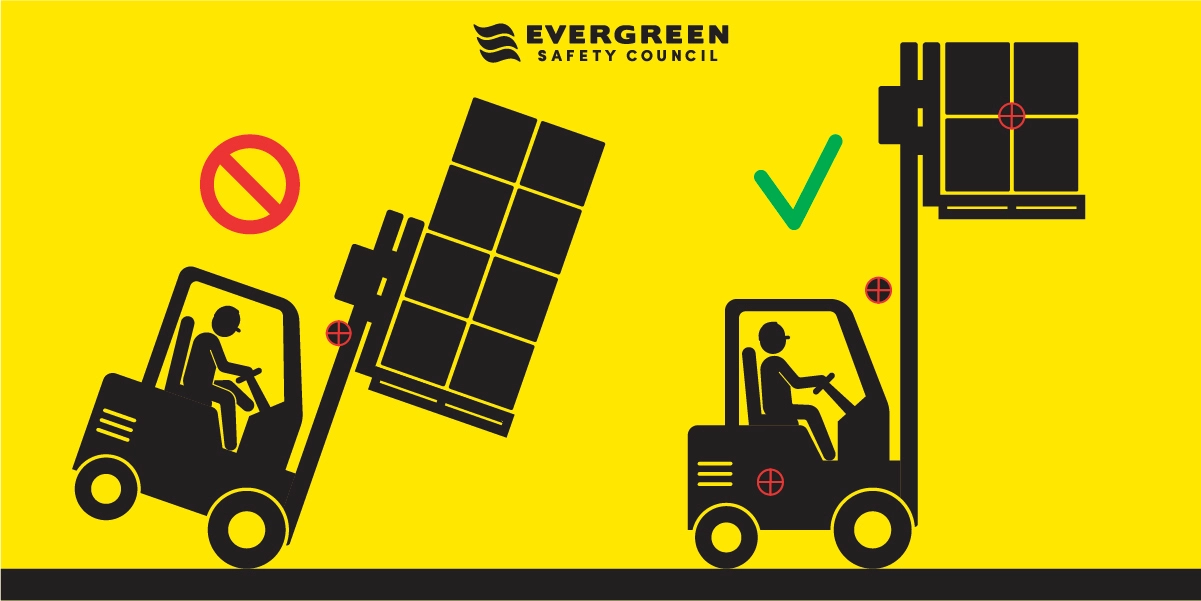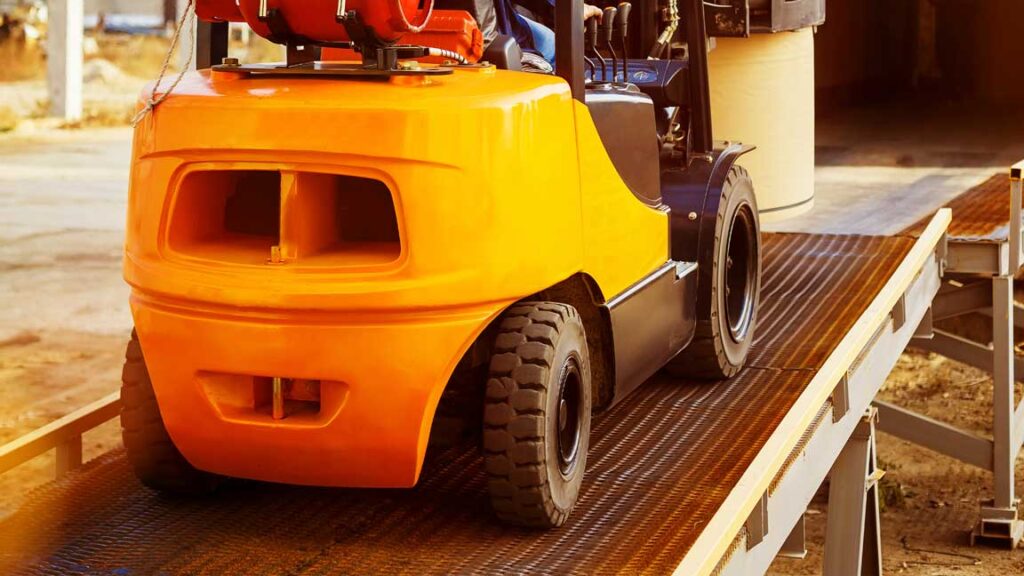
There’s a scene in the 2006 Pixar movie Cars in which Lightning McQueen and his towtruck friend Mater spend a reckless evening tractor tipping. It’s played for laughs, but we can laugh at it because it’s a cartoon about talking cars. You don’t actually want to find yourself in a tipover situation when you’re operating heavy machinery.
Tipovers are dangerous and preventable. But thanks to gravity—the force that pulls objects toward each other—they’re all too common.
Gravity is kind of sneaky. It pretends to be your biggest supporter, but it really just wants to bring you down. It’s the reason we’re able to stand on the ground without floating off into space … but it’s also the reason we hit the ground instead of floating up into the air when we trip and fall.
Every object has a center of gravity, which is the point at which its combined mass is concentrated. For a large, complex object like a forklift, the center of gravity is the point at which all of its parts balance one another.

Forklift suspension systems are built around three points: the two front drive wheels, and the turning center (pivot pin) of the back wheels. The forklift’s own center of gravity sits within this triangle—also known as the stability triangle. The points of the stability triangle also extend upwards to one point at the top of the mast, creating a pyramid shape.

When a load is lifted onto the forks, their centers of gravity are combined, and the overall center of gravity changes. The higher the load is lifted, the less stable the forklift becomes. The combined center of gravity (load + forklift) must stay within the pyramid, or the forklift will tip over. This is why it’s important to be aware of your forklift’s weight limit.

Uneven ground surfaces and ramps can also affect your vehicle’s stability, and in turn its center of gravity.
Remembering these key points while operating your forklift can help mitigate the risk of a tipover:
CAUTION
If you find yourself needing to grip the steering wheel tightly on a turn, you are going too fast and are at risk of tipping.
If your truck does start to tip, DO NOT TRY TO JUMP OUT. Grip the steering wheel, brace your feet on the floor, and ride out the tipover inside the operator compartment.
Remember, tipovers are relatively uncommon compared to other workplace injuries. However, due to the size and weight of the equipment and loads, they can be catastrophic, responsible for damage to equipment and goods, worker injuries, and even death. Taking the steps to prevent tipovers can help prevent such accidents.
If you are interested in taking our online forklift operator training course, or need a refresher course before recertifying, you can learn more about it below. It provides the same quality training as our classroom course, but is conveniently available online! It’s affordable, easy-to-use, mobile-friendly, and satisfies the OSHA “classroom” training requirement.
Share this article

Evergreen Safety Council is proud to be endorsed by the American Association of Safety Councils and Specialized Carriers and Rigging Association.
We offer online, in-person, and private group training for each of our programs.
Choose an option below to get help with a class or a certification.
Need a new certification card? Fill out this form to request a replacement.
Download your materials, get help with your tech, or find out what you need to complete before the day of class.
Minimize downtime, disruption, and expense by having one of our experienced instructors train your staff, at your facility.
View our growing library of informative safety articles.
You have questions, we have answers. View commonly asked questions here.
Access your account page on our registration system or training portal.
Since 1932, we’ve been empowering people to achieve their potential by training them to stay safe on the road and on the job.